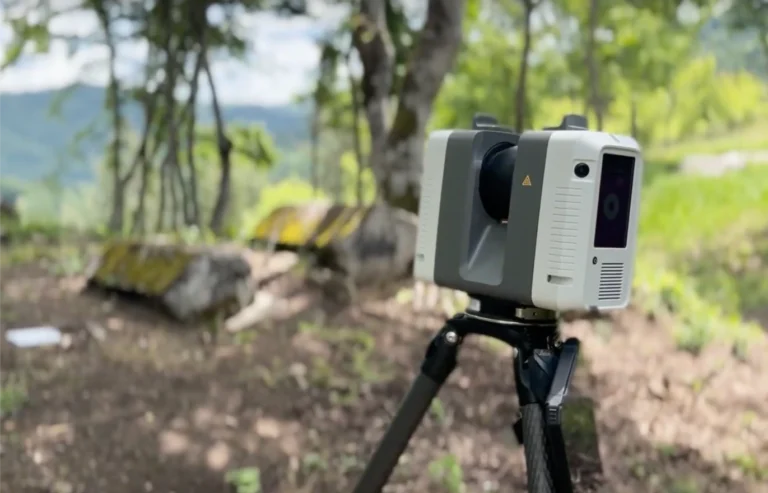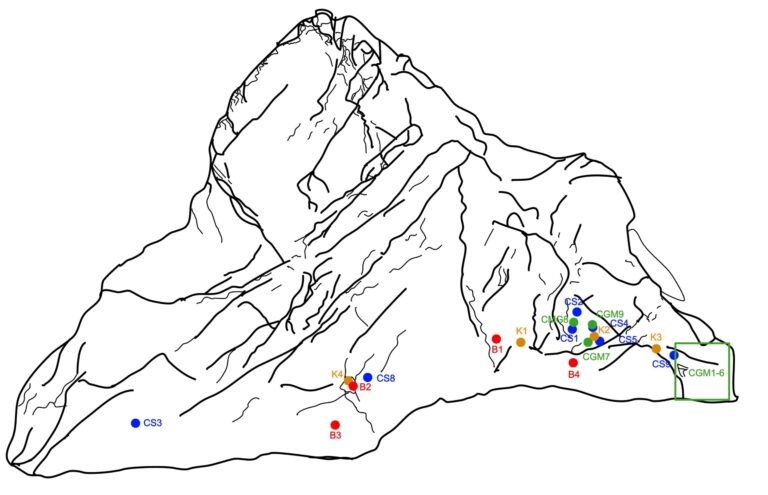From 17th to 20th June 2025, the Digitisation Unit at Heritage Malta conducted its latest fieldwork campaign in Caen, France, as part of the ongoing Horizon Europe STECCI project. The focus of this mission was the documentation of limestone funerary monuments found within the overgrown grounds of Cimetière Saint Jean, a historically significant site with a distinctly different character compared to previous locations scanned in the Western Balkans.
On site were team members Anthony Cassar, Jacob Saliba, Warren Attard, and Kyle Attard from Heritage Malta, working in close collaboration with STECCI partner Vincent Thiery, associate professor in applied mineralogy at IMT Nord-Europe, Center for Materials & Processes; LGCgE. Unlike the expansive, open-air necropolises of Bosnia and Herzegovina or Croatia, where Stećci lie scattered across natural landscapes, Cimetière Saint Jean is a walled and enclosed cemetery. First opened in the 18th century and long abandoned, the site is tucked within a disused quarry carved from the iconic Caen limestone. Its boundaries are steep and dramatic, and dense vegetation now blankets much of the cemetery.
The team focused on digitising limestone monuments whose material, form, and stylistic features offer points of comparison with Stećci found in the Balkans. Despite its French context, this site offers valuable insight into the assessment of the condition monitoring and conservation efforts of Limestone Heritage, an important lens for STECCI’s broader research objectives on cultural intersections and conservation challenges.
To adapt to the site’s conditions, the team relied primarily on terrestrial photogrammetry and ground-based LiDAR scanning. Aerial photogrammetry was ruled out due to the heavy tree cover, and conservation guidelines restricted any clearing or disturbance of the vegetation. This constraint, however, became an unexpected strength. The resulting scans offer an authentic and time-specific record of the site’s current condition, capturing the way natural overgrowth interacts with, obscures, and in some cases protects the monuments. For a project like STECCI where preservation, context, and documentation of at-risk heritage are key objectives, this unaltered state tells an important story. The team also continued its exploration of low-cost digitisation methodologies, including the use of Gaussian Splatting, a technique that reconstructs realistic 3D models from sparse image data. These tests are critical for identifying scalable solutions for heritage sites where resources or accessibility are limited, aligning with STECCI’s mission to make digital preservation more inclusive and adaptable across regions.
The acquisition mission in Caen was successfully completed, adding a valuable dataset to STECCI’s growing body of reference material on limestone heritage. Each site visited strengthens the project’s ability to assess and compare the challenges posed by environment, material decay, and access. With Caen now part of the record, STECCI moves forward with a deeper understanding of how context shapes conservation and how digital tools can help safeguard Europe’s vulnerable limestone heritage for generations to come.
WP4 Heritage Malta Completes the Digital Acquisition of Monuments at Caen, France, 17th-20th June, 2025




